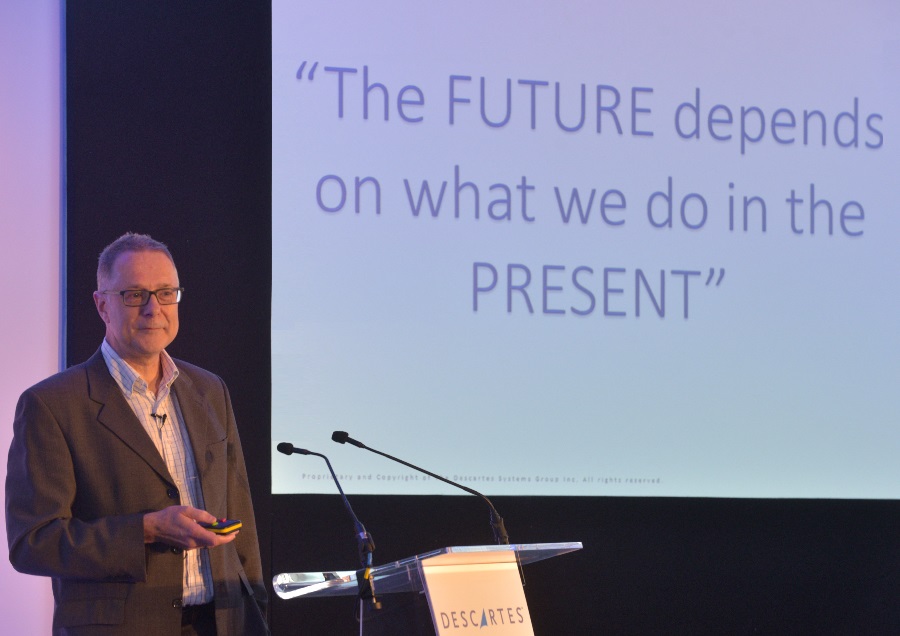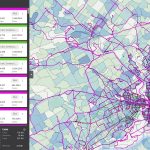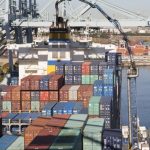Industry Talk
Regular Industry Development Updates, Opinions and Talking Points relating to Manufacturing, the Supply Chain and Logistics.The Rise of Low Traffic Neighbourhoods: What Carriers Need to Know About Delivering in Urban Areas

It’s been estimated that over 200 Low Traffic Neighbourhoods (LTNs) have been introduced across the UK, with a significant concentration in and around London. Their aim is to reduce traffic in residential areas by using various kinds of tactics including physical barriers, planters, camera enforcement and in some cases through issuing penalty charge notices (PCNs).
However, earlier this year, it was reported that plans to introduce LTNs in one of north London’s most affluent areas were shelved after it received backlash from residents concerned over traffic being funnelled through small roads and causing permanent daily traffic jams, resulting in delays to commuters and delivery drivers alike.
With cities across the UK experiencing numerous changes over the last decade, whether it be the expansion of clean air zones and Ultra Low Emission Zone (ULEZ) areas, LTNs, or increasing pedestrianised zones and 20mph speed limits, the constant changes have become a challenging conundrum for logistics businesses to navigate. With no sign of these zones going away, many companies are now being forced to rethink their delivery routes, invest in greener fleets, and adapt their operational strategies to stay compliant and competitive in an increasingly regulated urban landscape. Andrew Tavener, Head of Marketing at Descartes, explores this further.
What is a Low Traffic Neighbourhood?
LTNs are primarily aimed at reducing motor traffic, noise, pollution, and road accidents, freeing up the streets for pedestrians and cyclists, and other methods of environmentally-friendly transport. They are defined as residential streets between main or “distributor” roads; and they aim to discourage or prevent motor vehicles from travelling through an area, keeping buses, Heavy Goods Vehicles (HGVs), vans and non-local traffic to the main or distributor roads outside the LTN. Once vehicle numbers are eliminated or the volume is sufficiently reduced in an area, the speed limit is often reduced too, making streets quieter and safer for residents, who can swap to alternative forms of travel for short journeys.
While, in theory, LTNs are not supposed to affect residents driving to their homes or receiving deliveries, they do make the process much harder for delivery drivers, who often face longer routes and restricted access. This increases journey times and fuel consumption for carriers and adds complexity to route planning and scheduling – especially when navigating multiple LTNs in a single area. Even minor delays can have a significant knock-on effect for time-sensitive deliveries, such as groceries or medical supplies.
How are Low Traffic Neighbourhoods enforced?
The simplest method for the local council is to place “modal filters” at certain strategic points around the neighbourhood. Modal filters can take the form of bollards, planters, gates, or width restrictions, as well as any form of filter that either keeps out the larger vehicles or prevents them from entering the street entirely from certain directions. These filters can also take the form of one-way streets or signs which utilise Automatic Number Plate Recognition (ANPR) camera enforcement with fines for infringements. As a result, access to neighbourhoods may be via one or more roads, and the exit may be via another, so delivery vehicles must use the latest mapping technology for the greatest efficiency and need to account for this in their route plans or face losing time or paying a hefty fine.
How Can Logistics Businesses Navigate Low Traffic Neighbourhoods?
In the logistics space, efficient route planning and dispatch are vital for any business to be successful. With LTNs and other initiatives on the rise, carriers must ensure they remain one step ahead of the curve by being equipped with the latest route optimisation technology to address the challenges posed by the likes of LTNs, Ultra Low Emission Zones, and other urban restrictions.
By using intelligent route optimisation tools, carriers can create routes that automatically divert vehicles around LTNs altogether. This is especially useful for fleets that do not yet meet low-emission standards. For example, many smaller logistics businesses are still operating older diesel vans, which could result in fines if they fail to avoid certain zones of a city.
A great route optimisation tool can also adapt on the move, meaning delivery drivers can navigate the quickest routes during peak hours or around congested areas caused by LTNs. Having this real-time visibility into delivery routes can be invaluable for businesses. Not only can it reroute drivers to avoid congestion, but it can also help the back-office monitor driver progress, track estimated times of arrival, and send and receive alerts to/from customers to help ensure timely deliveries.
For instance, if a driver is about to enter a newly enforced LTN or encounters a last-minute road closure, the system can automatically suggest an alternative route to maintain schedule adherence and avoid penalties. It is also helpful to minimise disruptions and reduce time spent in congested zones. This supports smoother operations and better customer service, while also helping cut emissions and fuel costs.
Conclusion:
While the goals of LTNs are commendable and seem like a huge step forward for the environment and public safety, the UK government also believes that longer-term evidence is needed to draw conclusive findings on the impact of LTNs on active travel updates, road safety, street crime and the local economy. Irrespective of this, there are currently around 36 schemes in the UK that are having an impact on carriers’ delivery operations, who are striving to maintain efficiency and service levels.
Therefore, since these schemes are currently being implemented, logistics providers have two choices as they face the challenges they present. Adapt to the new urban delivery landscape or risk falling behind. Businesses can adapt to this new status quo by equipping themselves with advanced route optimisation and real-time tracking software. With this technology, businesses will ensure they future-proof their fleets while gaining a competitive advantage in the evolving last-mile urban delivery ecosystem.











